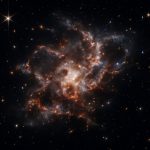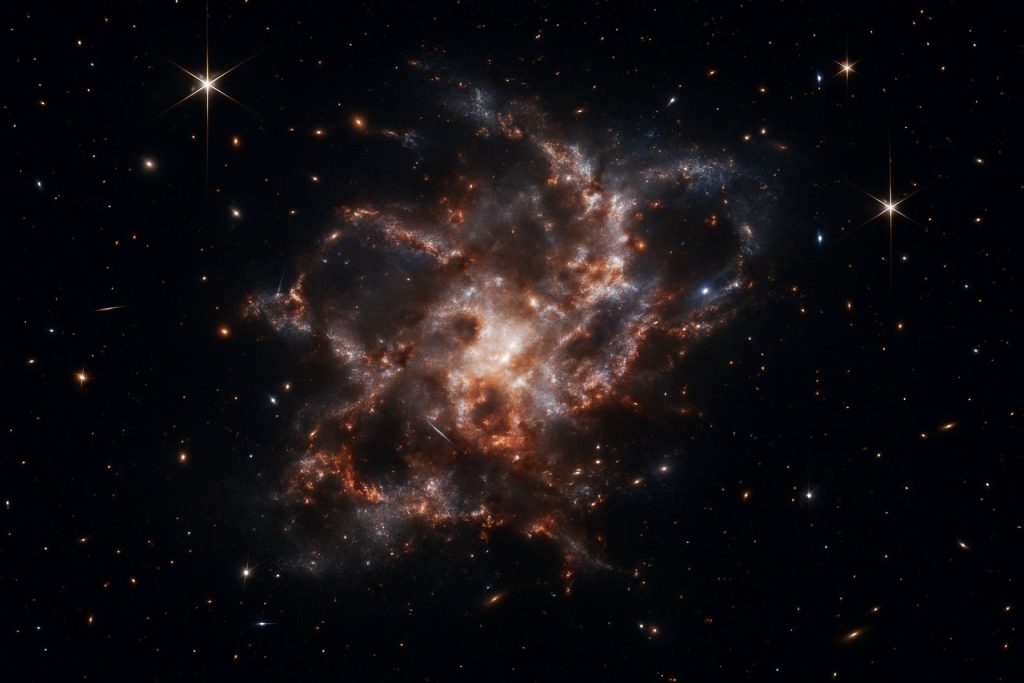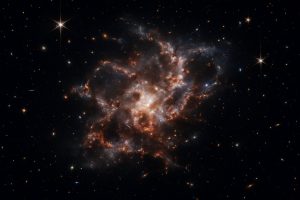Scientists Stunned as James Webb Telescope Unveils the Wild, Chaotic Childhood of the Universe
NASA’s James Webb Telescope reveals galaxies grew in cosmic chaos, not order—reshaping our understanding of the universe’s beginnings.
- 1,700+ galaxy groups discovered in latest cosmic survey
- 12 billion years of cosmic history revealed
- 10x deeper galaxy sample than previous studies
- 1st direct evidence of chaotic, rapid galaxy evolution
For decades, NASA theorists described the universe’s growth as a gentle, orderly process—galaxies slowly swirling into elegant spirals and smooth ellipses. But the James Webb Space Telescope (JWST) is flipping that vision on its head.
In the deepest and most revealing cosmic survey ever, the JWST has peered over 12 billion years into the past. Its stunning images unveil a universe born out of sheer pandemonium—a time when galaxies formed quickly, erratically, and in frenetic bursts.
Presented in the latest issue of Astronomy & Astrophysics, researchers catalogued an incredible 1,700+ galaxy groups. This “family album” of the cosmos is revolutionizing what we thought we knew about how galaxies—like our own Milky Way—came to be.
Q: What Did the JWST Actually See?
The JWST’s super-sensitive instruments captured light from galaxies formed billions of years before Earth existed. Astronomers describe early cosmic groups as “clumpy” and “chaotic”—galaxies with ragged edges, wild shapes, and intense bursts of star formation. Rather than the graceful spirals we admire today, these ancient galaxies looked like cosmic fireworks frozen in time.
Q: Why Are Galaxy Groups So Important?
Galaxies rarely exist in isolation. They gather into groups and clusters, linked by mysterious threads of gravity to form a colossal “cosmic web.” Our own Milky Way is part of the Local Group, a close galactic family that paints just a tiny piece of a much bigger picture. By mapping over 1,700 such families, the JWST lets scientists trace the evolution of these clusters—and, by extension, the evolution of the universe itself.
How Did Galaxies Transform from Chaos to Order?
If the early universe was a cosmic mosh pit, today’s galaxies are a synchronized dance. Billions of years of merging, colliding, and consuming smaller galaxies turned chaotic clusters into organized structures. Spirals like the Milky Way emerged, starbursts slowed, and galaxies settled into elegant forms. The JWST’s images reveal this coming of age, tracking the universe’s transformation from adolescent chaos to mature structure.
What Roles Do Dark Matter and Black Holes Play?
Beneath the visible fireworks, unseen forces orchestrate everything. Dark matter—the mysterious, invisible glue—binds galaxies together, shaping the cosmic web. At the heart of many galaxies, gigantic black holes generate enormous energy, heating gas and slowing star birth. Thanks to the fresh JWST data, astronomers are finally piecing together how these shadowy actors directed the show.
How to Keep Up with 2025’s Cosmic Discoveries
With each new JWST revelation, scientists rewrite the story of our universe. The “chaotic universe” model is quickly becoming the new standard in cosmology. For space fans and curious minds, staying informed has never been more important. Explore trustworthy sources like NASA, ESA, and Sky & Telescope for the latest breakthroughs.
Don’t Blink—The Space Story of Our Generation Is Unfolding!
- Follow NASA for breaking JWST updates
- Read major astronomy journals for new discoveries
- Track live sky events and telescope launches
- Share the cosmic story—spread awe!










More Stories
Nvidia Tightens GPU Grip: AMD, Intel Struggle as GeForce RTX 50 Series Dominates 2025
Stellar XLM Set to Explode? Bold Price Predictions Hint at Major 2025 Breakout
$150 Billion Power Revolution: How Digital Innovation Is Rewiring the Energy Future of Eastern Europe and Central Asia